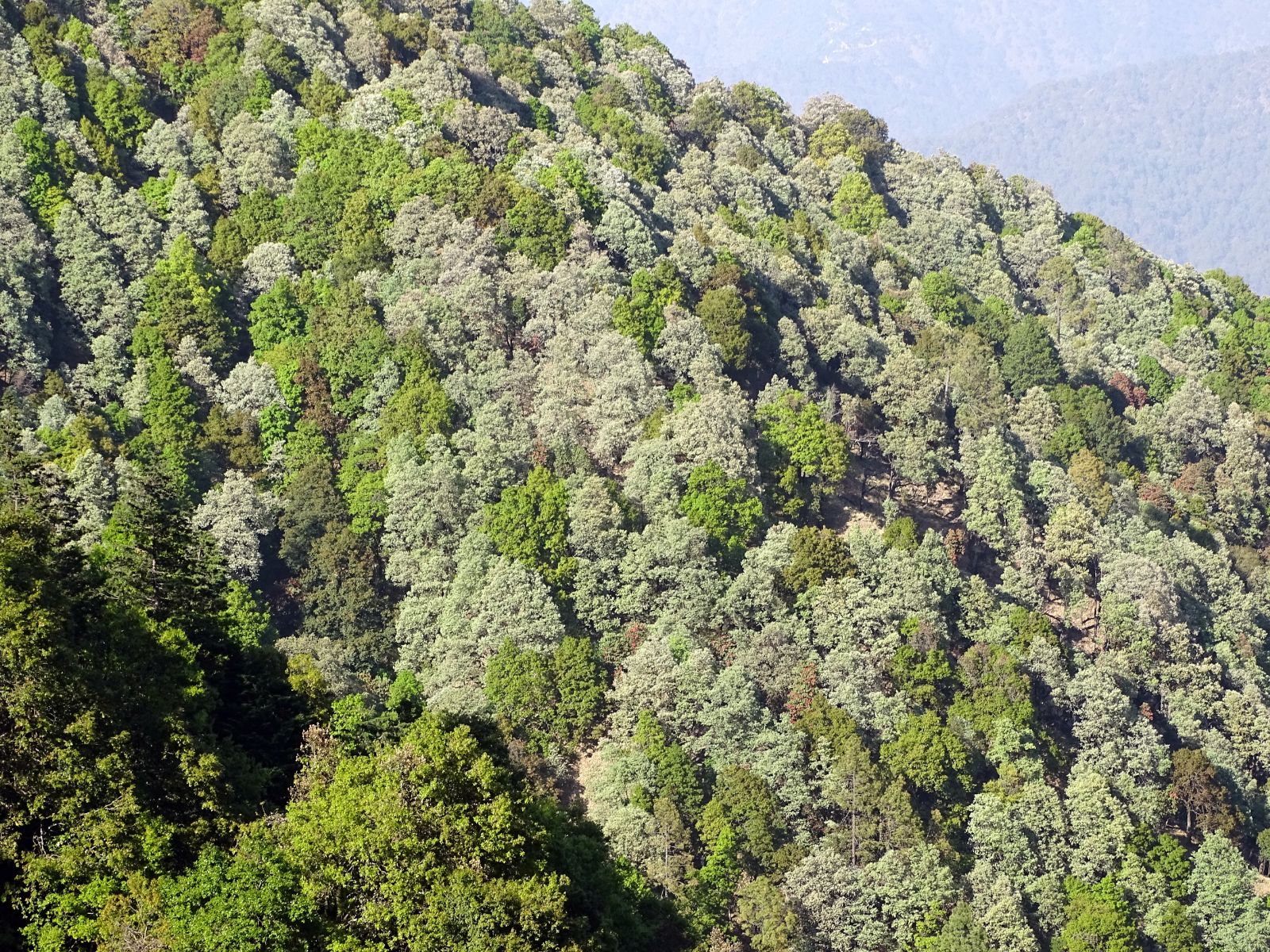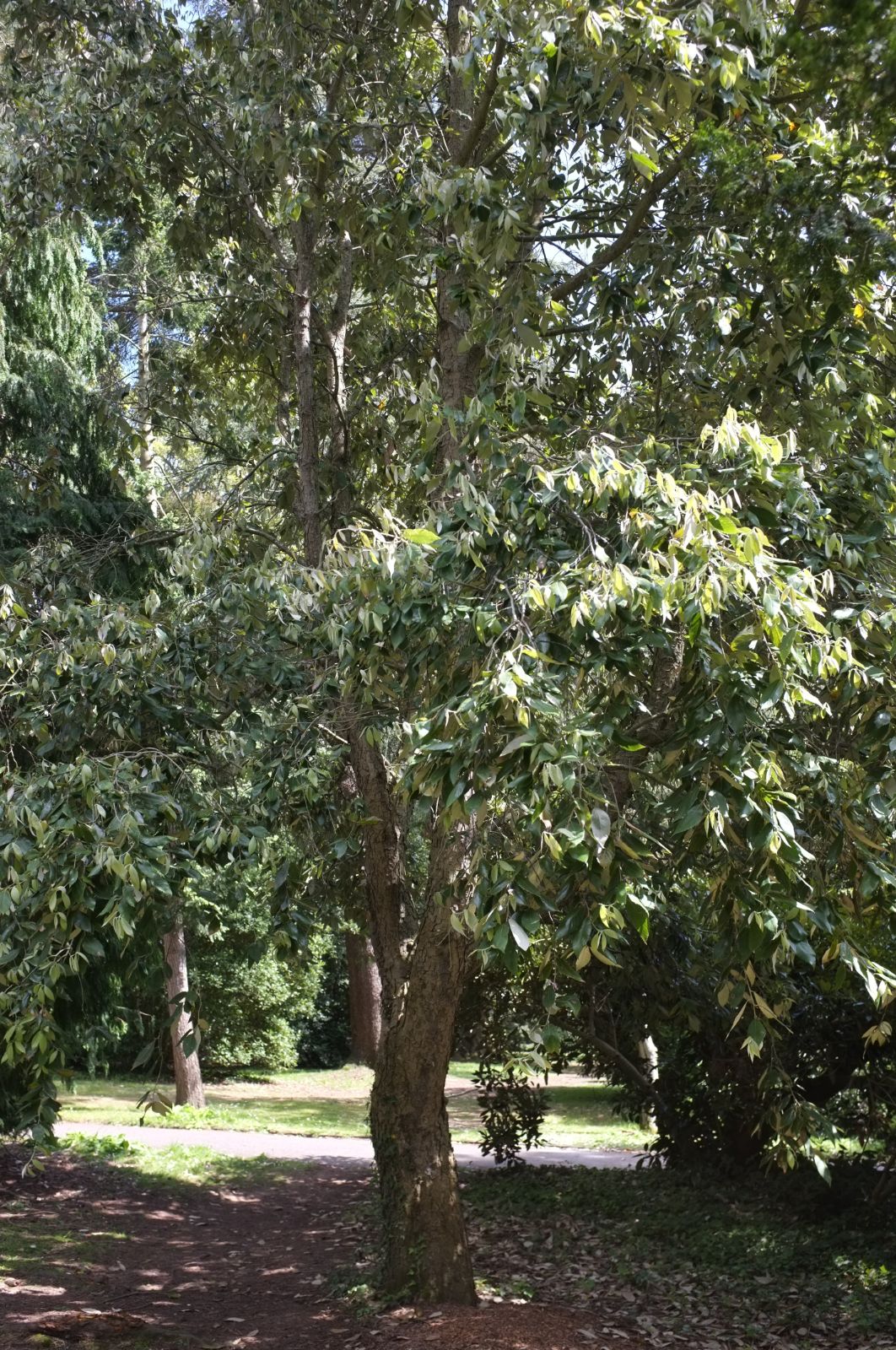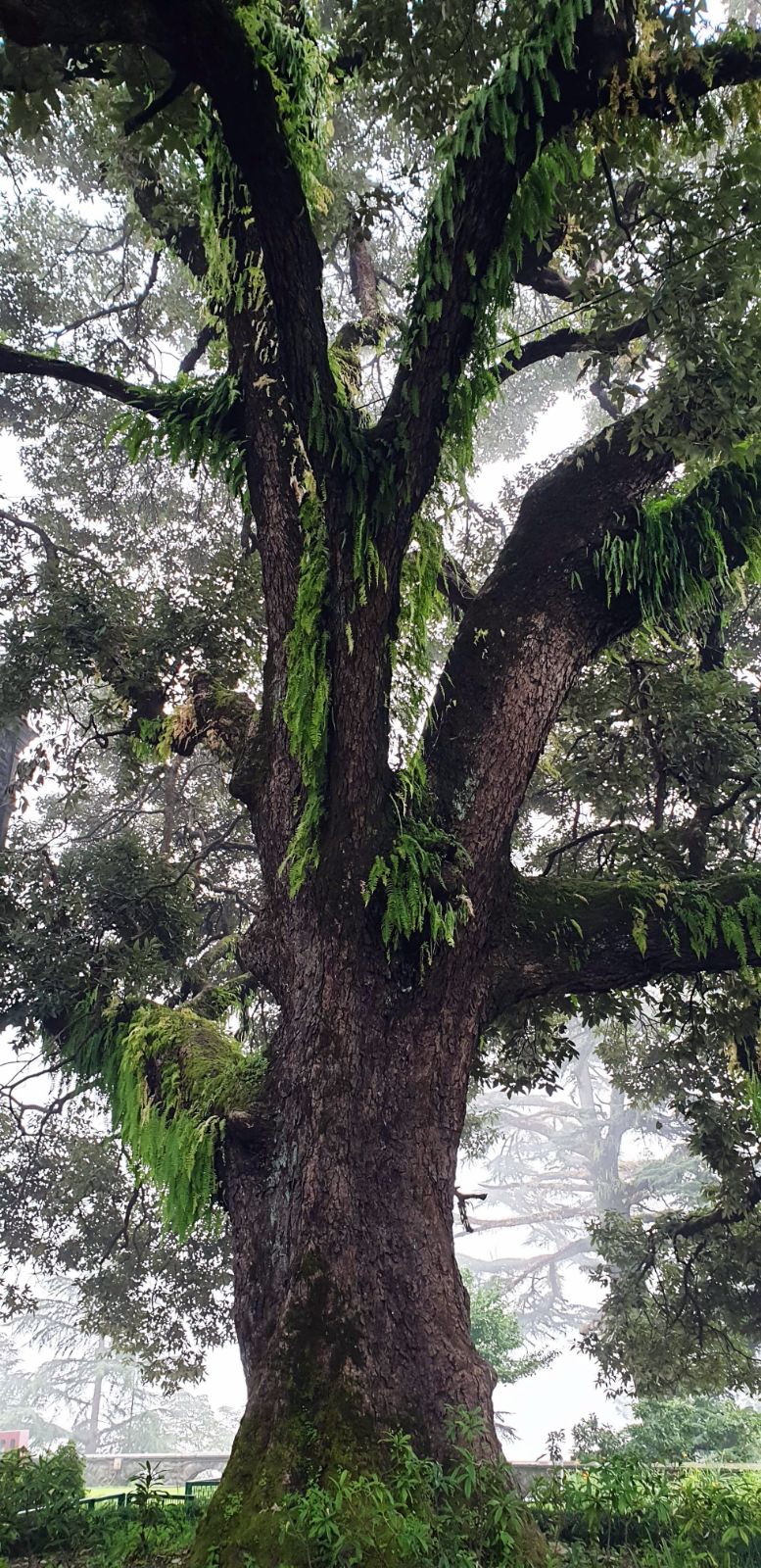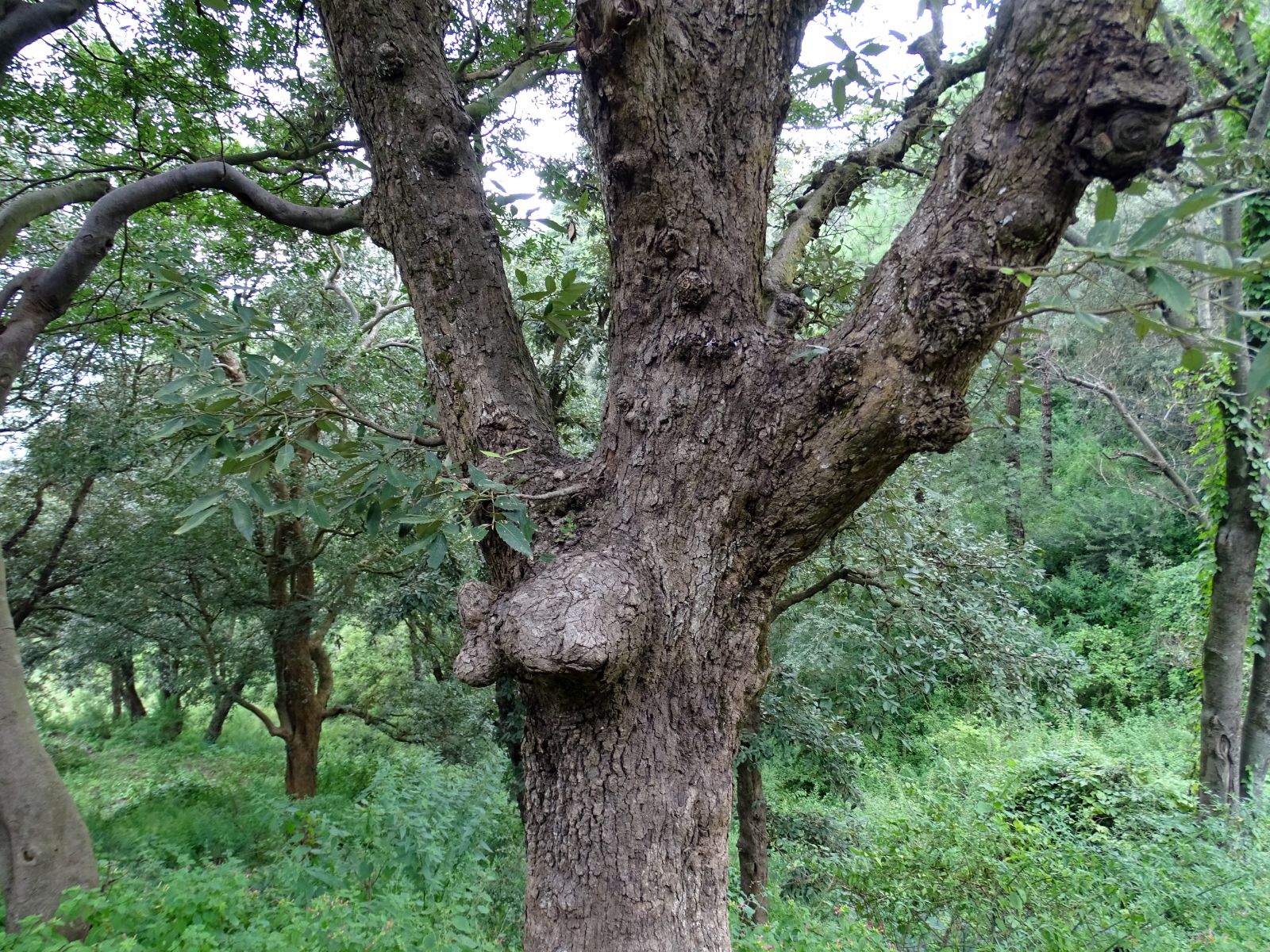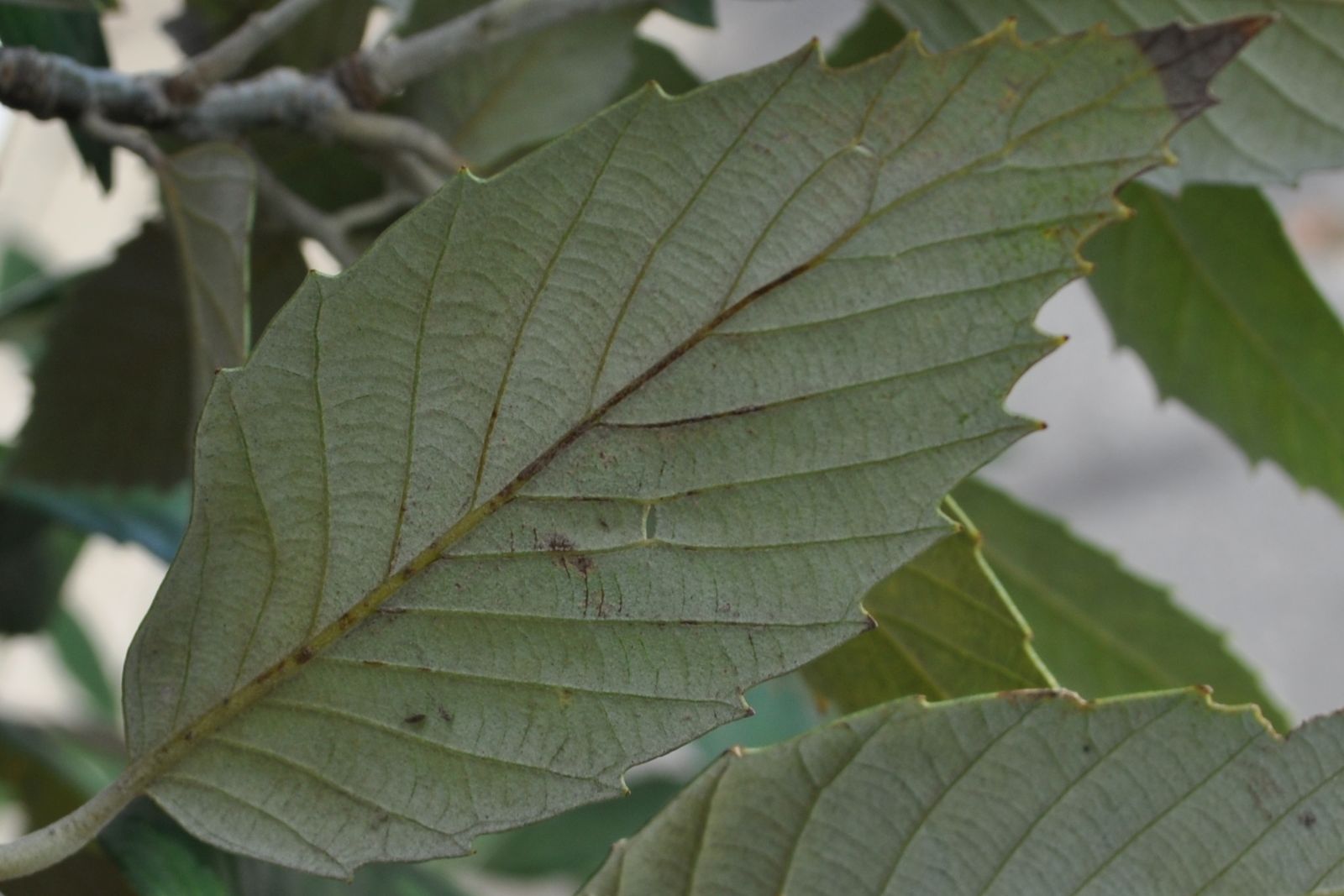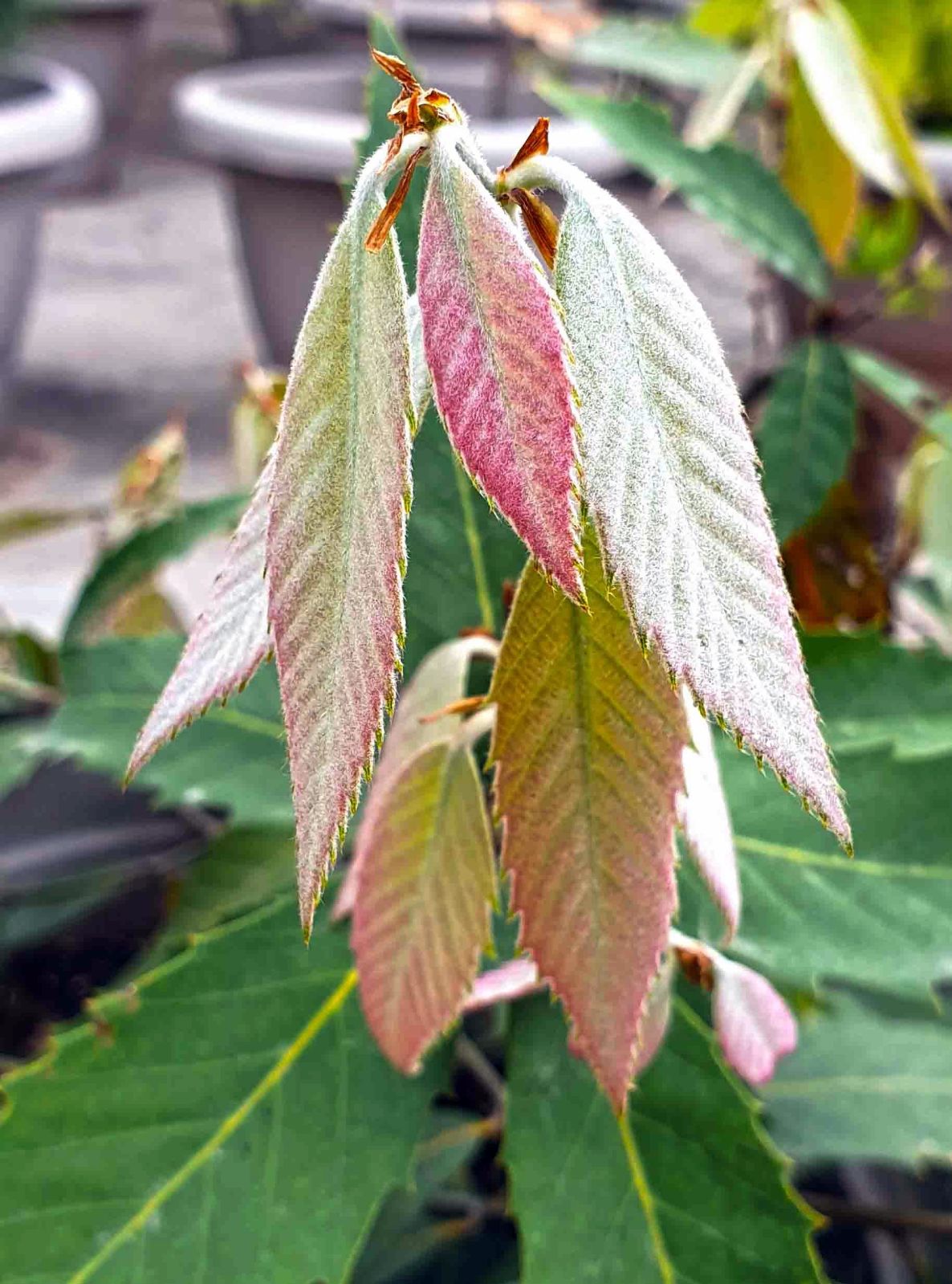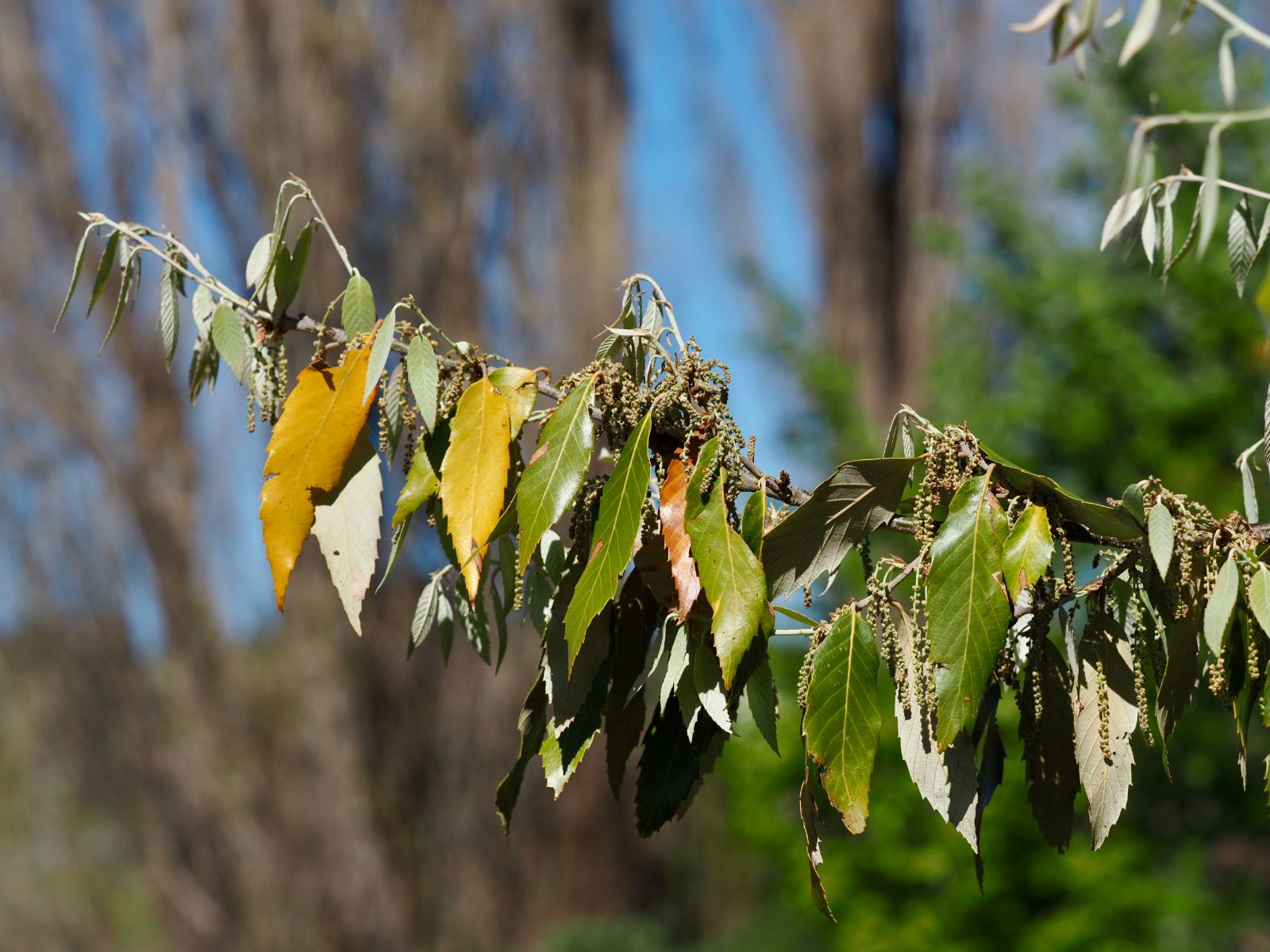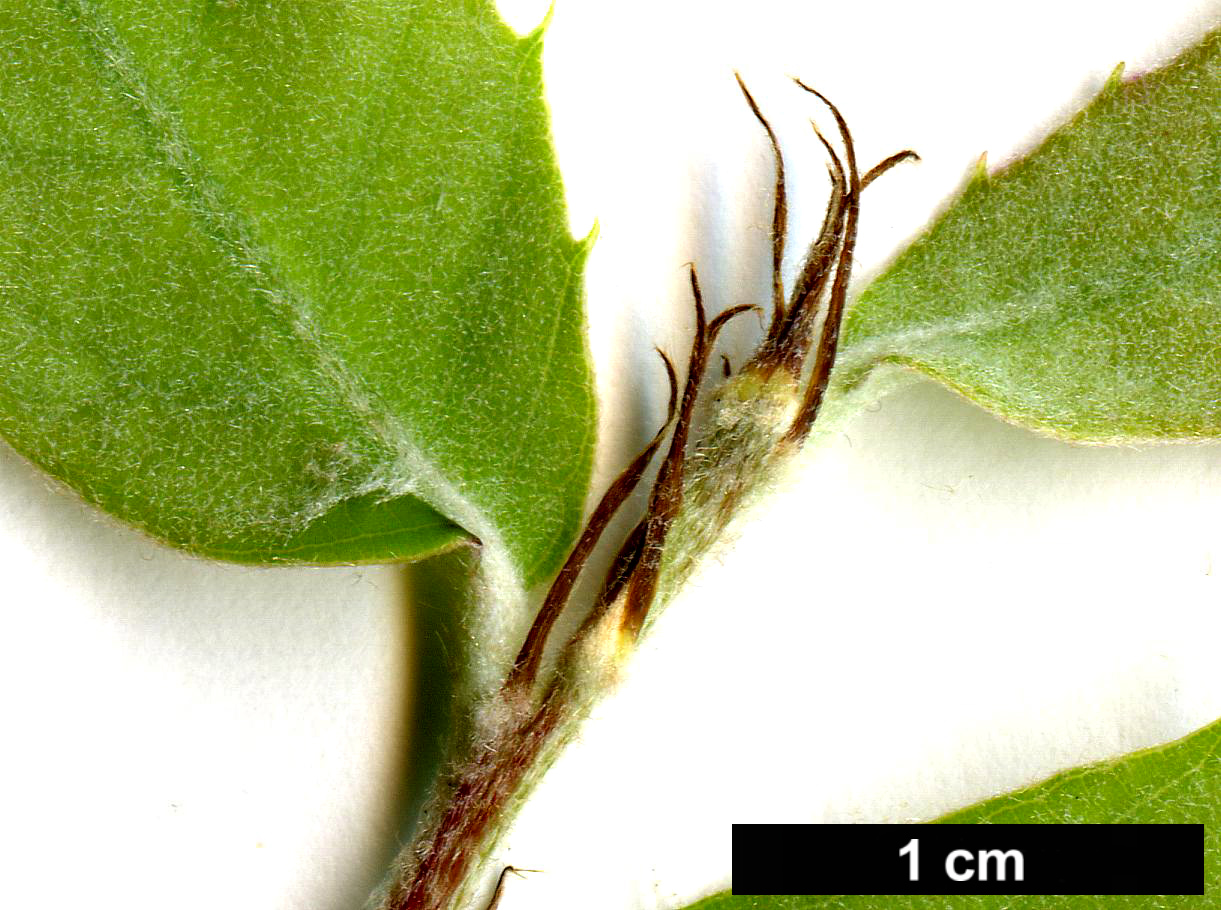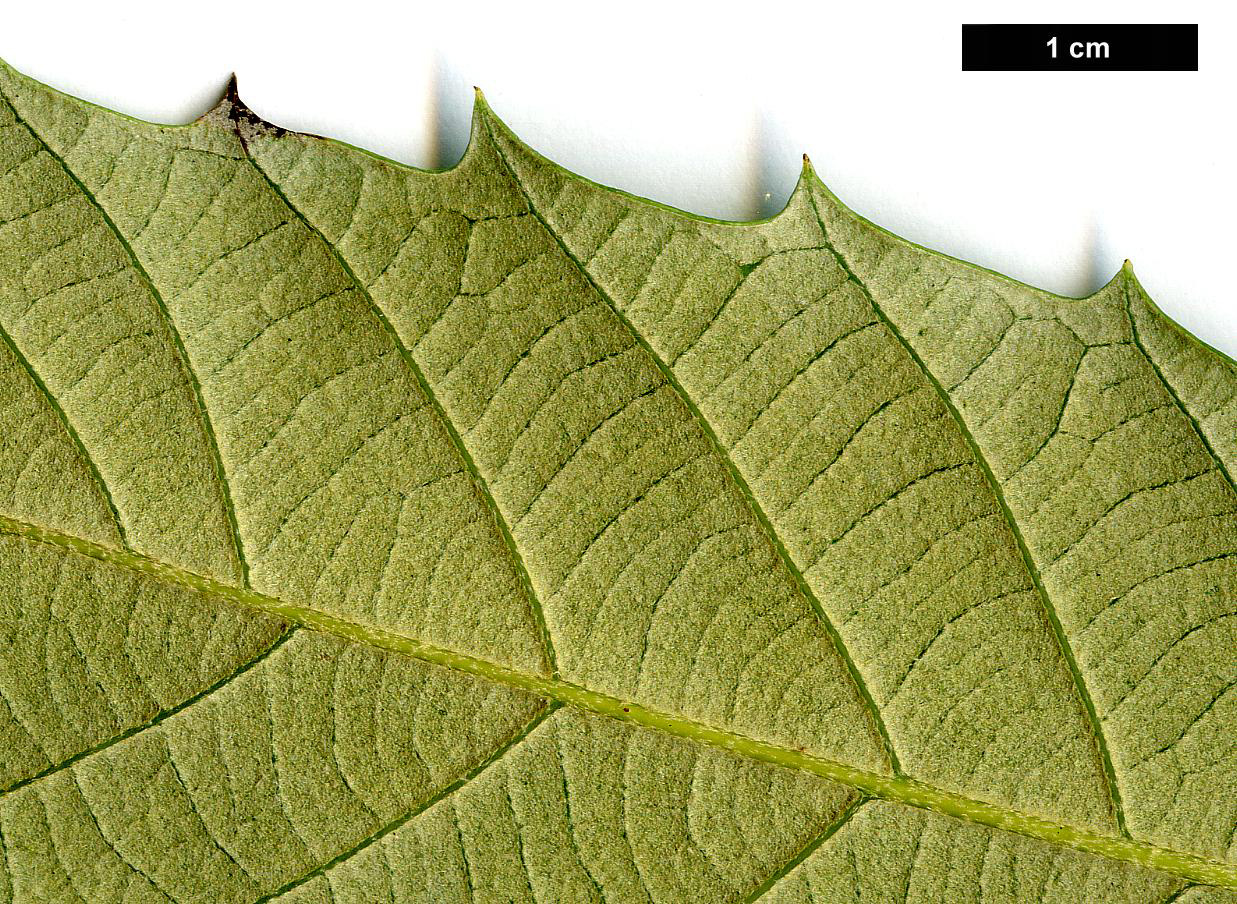Quercus leucotrichophora
Sponsor
Kindly sponsored by
The Trees and Shrubs Online Oak Consortium
Credits
Allen Coombes & Roderick Cameron (2021)
Recommended citation
Coombes, A. & Cameron, R. (2021), 'Quercus leucotrichophora' from the website Trees and Shrubs Online (treesandshrubsonline.
Genus
- Quercus
- Subgen. Cerris, Sect. Ilex
Common Names
- Banj
Synonyms
- Quercus incana Roxb. (1814), not Bartr. (1791)
Other taxa in genus
- Quercus acerifolia
- Quercus acherdophylla
- Quercus acrodonta
- Quercus acuta
- Quercus acutifolia
- Quercus acutissima
- Quercus afares
- Quercus affinis
- Quercus agrifolia
- Quercus alba
- Quercus aliena
- Quercus alnifolia
- Quercus aquifolioides
- Quercus arizonica
- Quercus arkansana
- Quercus aucheri
- Quercus augustini
- Quercus austrina
- Quercus × auzendei
- Quercus baloot
- Quercus bambusifolia
- Quercus baronii
- Quercus bicolor
- Quercus brantii
- Quercus buckleyi
- Quercus canariensis
- Quercus canbyi
- Quercus candicans
- Quercus castanea
- Quercus castaneifolia
- Quercus cerris
- Quercus chenii
- Quercus chrysolepis
- Quercus coccifera
- Quercus cocciferoides
- Quercus coccinea
- Quercus conspersa
- Quercus crassifolia
- Quercus crassipes
- Quercus delavayi
- Quercus dentata
- Quercus deserticola
- Quercus dolicholepis
- Quercus douglasii
- Quercus dumosa
- Quercus durifolia
- Quercus eduardii
- Quercus ellipsoidalis
- Quercus emoryi
- Quercus engelmannii
- Quercus engleriana
- Quercus euboica
- Quercus eugeniifolia
- Quercus fabri
- Quercus faginea
- Quercus falcata
- Quercus floribunda
- Quercus frainetto
- Quercus franchetii
- Quercus fruticosa
- Quercus fusiformis
- Quercus gambelii
- Quercus garryana
- Quercus geminata
- Quercus georgiana
- Quercus germana
- Quercus gilliana
- Quercus gilva
- Quercus glabrescens
- Quercus glauca
- Quercus graciliformis
- Quercus gravesii
- Quercus griffithii
- Quercus grisea
- Quercus guyavifolia
- Quercus hartwissiana
- Quercus hemisphaerica
- Quercus × hispanica
- Quercus hondae
- Quercus hypargyrea
- Quercus hypoleucoides
- Quercus ilex
- Quercus ilicifolia
- Quercus imbricaria
- Quercus incana
- Quercus infectoria
- Quercus insignis
- Quercus ithaburensis
- Quercus kelloggii
- Quercus × kewensis
- Quercus kiukiangensis
- Quercus laceyi
- Quercus laevis
- Quercus lamellosa
- Quercus lanata
- Quercus lancifolia
- Quercus laurifolia
- Quercus laurina
- Quercus × leana
- Quercus × libanerris
- Quercus libani
- Quercus lobata
- Quercus lobbii
- Quercus lodicosa
- Quercus longinux
- Quercus longispica
- Quercus look
- Quercus × ludoviciana
- Quercus macranthera
- Quercus macrocalyx
- Quercus macrocarpa
- Quercus macrolepis
- Quercus marilandica
- Quercus mexicana
- Quercus michauxii
- Quercus mongolica
- Quercus monimotricha
- Quercus montana
- Quercus morii
- Quercus muehlenbergii
- Quercus myrsinifolia
- Quercus myrtifolia
- Quercus nigra
- Quercus × numidica
- Quercus oblongifolia
- Quercus obtusata
- Quercus oglethorpensis
- Quercus oxyodon
- Quercus pagoda
- Quercus palmeri
- Quercus palustris
- Quercus pannosa
- Quercus parvula
- Quercus petraea
- Quercus phellos
- Quercus phillyreoides
- Quercus planipocula
- Quercus poilanei
- Quercus polymorpha
- Quercus pontica
- Quercus prinoides
- Quercus pubescens
- Quercus pyrenaica
- Quercus rehderiana
- Quercus reticulata
- Quercus robur
- Quercus rotundifolia
- Quercus rubra
- Quercus rugosa
- Quercus rysophylla
- Quercus sadleriana
- Quercus salicina
- Quercus sartorii
- Quercus × schneideri
- Quercus schottkyana
- Quercus semecarpifolia
- Quercus senescens
- Quercus serrata
- Quercus sessilifolia
- Quercus setulosa
- Quercus shumardii
- Quercus sinuata
- Quercus spinosa
- Quercus stellata
- Quercus stenophylloides
- Quercus suber
- Quercus subspathulata
- Quercus tarokoensis
- Quercus tatakaensis
- Quercus texana
- Quercus tomentella
- Quercus trojana
- Quercus tungmaiensis
- Quercus turbinella
- Quercus × turneri
- Quercus undulata
- Quercus utahensis
- Quercus utilis
- Quercus uxoris
- Quercus variabilis
- Quercus velutina
- Quercus virginiana
- Quercus vulcanica
- Quercus warburgii
- Quercus wislizenii
- Quercus xalapensis
An evergreen tree 6–30 m, can reach 3 m dbh. Bark scaly, greyish, peeling off the trunk in large flakes; young shoots clothed with whitish pubesence, later glabrous and brown, with numerous lenticels. Leaves stiff and leathery (softer in cultivation) oblong-lanceolate or narrowly oval, base slightly rounded or tapered but not cordiform, apex tapered to a fine slender point; margins lined with 8–15 acuminate teeth except towards the base, 6–18 cm long × 3–5 cm wide; leaves emerge purplish pink covered in whitish starred tomentum, upper surface soon becoming glabrous and dark green, lower surface with persistent dense white tomentum; veins prominent beneath, 10–20 each side of the midrib, which is slightly prominent. Fruits solitary or sometimes two or three together on a short, felted peduncle; acorns ovoid to conical, 1–2.5 cm long × 1.2–1.5 cm wide, ripening in the first year. Cupule 1.2–1.5 cm long × 1.2–1.5 cm wide, enclosing about half the acorn, with appressed, scales covered with whitish pubescence. (le Hardÿ de Beaulieu & Lamant 2010; Bean 1976).
Distribution Myanmar North India Himachal Pradesh, Punjab Pakistan North Thailand Vietnam
Habitat Mountain forests, 600–2500 m asl, in association with Alnus nepalensis, Carpinus viminea, Albizia julibrissin, Cedrus deodara, Cornus capitata, C. macrophylla, Ilex dipyrena, Rhododendron arboreum, Quercus glauca, Q. lanata.
USDA Hardiness Zone 8
Conservation status Near threatened (NT)
Taxonomic note The taxonomy of this and related species, including Quercus franchetii, Q. lanata, Q. lodicosa and Q. oblongata, needs further work. The earliest name in this group is Q. lanata (1814) and this would be the correct name if these species were regarded as representing the same widespread and variable entity. Q. lanata and Q. leucotrichophora were maintained as separate species by Menitsky (2005) and by Deng et al. (2015), who both stated that acorn maturation was annual in Q. lanata and biennial in Q. leucotrichophora. Bargali et al. (2014) specified that acorns of Q. leucotrichophora take 19–21 months to mature, while Q. lanata’s ripen in eight. However, some photographs we have seen of Q. leucotrichophora appear to show that the fruit can ripen on first-year shoots in August to February, before or sometimes as the new growth and flowers emerge in spring, implying that this species can ripen fruits within one year. A similar situation is found on trees cultivated in New Zealand where fruits mature in June-July and young growths emerge in August to September (D. Cranwell, pers. comm. 2020). Fruit maturation time was the only difference between these species given by Deng et al. (2015). Q. lanata does seem to differ from Q. leucotrichophora in having the leaves somewhat woollier beneath but the significance of this is not yet clear. Recently, the earlier name Q. oblongata has been applied to what was previously known as Q. leucotrichophora (Plants of the World Online 2020). Quercus oblongata was published by Don (1825) with a very brief description, which stated that the leaves are yellowish tomentose beneath. This is more indicative of Q. lanata than Q. leucotrichophora. Loudon (1844) states that ‘Professor Don, in his Prodromus Flora Nepalensis, had described Q. lanuginosa and Q. oblongata as two species; but he has since informed us that the specimen which he had of Q. oblongata being very imperfect he is now disposed to refer it to Q. lanata’. Q. lanuginosa D. Don (1825) is a later homonym of Q. lanuginosa Lam. (1799) – a synonym of Q. cerris – and is now regarded as synonym of Q. lanata (Plants of the World Online 2020). The species we refer to here as Q. leucotrichophora was first described in 1832 (as Q. incana) so Don had the opportunity of choosing this or Q. lanata when reconsidering the identity of his Q. oblongata. Considering that the identity of Q. oblongata is in question we are reluctant to use it as the correct name for Q. leucotrichophora and regard it as more likely to be a synonym of Q. lanata q.v.
One of the major oak species of Asia, extending from Pakistan to Vietnam. It is the most common oak in the western Himalayas, occurring at 600–2500 m asl, in Myanmar above 1500 m asl. Generally forming groups and sometimes extensive pure stands, especially in the humid subtropical Himalayan forests at lower altitudes, Quercus leucotrichophora hybridizes naturally with Q. floribunda, forming Q. × parkeri A. Camus. It is an oak of high mountains and dry hills, appreciates rich, deep soils of cool valleys, also loam, and can withstand short periods of flooding by running water. It occurs on soil of varied origin (calcareous, gneiss, schist) and tolerates clay, but does not prosper on highly acidic or sandy soils. That aside, it appears indifferent to pH. The species is moderately hardy, so it is worth seeking provenances above 2000 m asl to improve its chances in cultivation in temperate gardens. In the north of India, it receives between 1000 and 2500 mm of rain a year, in Himachal Pradesh up to 3000 mm, while in other areas it does not tolerate drought (le Hardÿ de Beaulieu & Lamant 2010).
According to Bean (1976), Q. leucotrichophora was introduced to the UK around 1815, together with Rhododendron arboreum, its almost inseparable companion in the wild. He reported that at Kew it would grow up to 2 m high during a series of mild winters, but a fairly hard winter would cut it back to ground level and a severe one kill it outright.
Several specimens are recorded in English and Irish gardens. At Trewithen in Cornwall it was18 m high in 1993 but has sinced died. It can also be found in the grounds of Exeter University (14 m in 2013) and Dunloe Castle Hotel, Co. Kerry (9 m in 2004) (Tree Register 2020). At Chevithorne Barton a tree accessioned in 1997 has reached 8.9 m in 2020 (J. MacEwen pers. comm.), while a tree planted in 2001 at Buckingham Place reached 6 m in 2020 (M. Lane pers. comm.). Le Hardÿ de Beaulieu & Lamant (2010) write of a superb specimen at Jardin de Serre de la Madone, the garden at Menton in southeast France created by Major Lawrence Johnston, founder of Hidcote in the UK.
Perhaps the largest specimens in cultivation are to be found in Australia. Several old trees grow in the state of Victoria, perhaps from seed distributed in the latter half of the nineteenth century by Sir Ferdinand von Mueller (1825–1896), German-Australian botanist and Director of Royal Botanic Gardens Victoria. Specimens at different sites measured around 15 m in the mid 1980s; one at Mount Macedon was said to be 31 m tall in 1989, but this record requires confirmation (Royal Botanic Gardens Victoria 2020 [as Q. oblongata], T. Entwhistle pers. comm. 2020).
What appears to be a hybrid between Q. leucotrichophora and Q. ilex is grown at Hackfalls Arboretum in New Zealand, raised from seed collected from a tree at Christchurch Botanic Garden said to be a hybrid of this parentage. An offspring from this tree, presumably an F3 hybrid with Q. ilex, was also planted at Hackfalls. In appearance it is similar to Q. ilex, but possible influence of the Asian species can be inferred from the particularly white undersides and preponderantly entire margins of the leaves (pers. obs. 2019). The species has been widely planted in New Zealand following an introduction by David Cranwell of seed sourced from Uttarakhand, India; it has been planted as an ornamental but also as a windbreak in kiwi fruit plantations (Cameron 2018).
This particularly attractive oak has some of the whitest leaf undersides of the genus. The flaking bark is another eye-catching feature. The epithet means ‘bearer of white hairs’ and derives from Ancient Greek: λευκός (leukós) = white + θρίξ (thríx) = hair + -phora, from φέρω (phero) = to bear.

